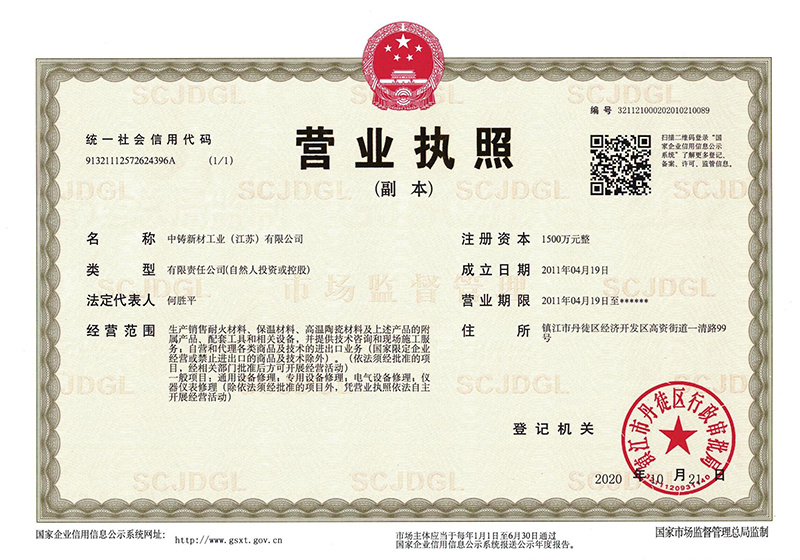News
SINO-FOUNDRY—professional refractory manufacturer
Top Factors to Consider When Selecting Dry Ramming Mass for Copper
2025-05-24
Top Factors to Consider When Selecting Dry Ramming Mass for Copper When it comes to the copper industry, the selection of the right materials is crucial for ensuring the success and longevity of your operations. **Dry ramming mass** plays an essential role in the production of copper, particularly in the lining of furnaces and other high-temperature applications. This article explores the top fact
Top Factors to Consider When Selecting Dry Ramming Mass for Copper
When it comes to the copper industry, the selection of the right materials is crucial for ensuring the success and longevity of your operations. **Dry ramming mass** plays an essential role in the production of copper, particularly in the lining of furnaces and other high-temperature applications. This article explores the top factors to consider when selecting dry ramming mass for copper, ensuring you make an informed choice that meets your production requirements.
Understanding Dry Ramming Mass
Dry ramming mass is a type of refractory material used in high-temperature processes. It is typically applied in a dry state and then compacted to form a solid lining. This material is designed to withstand extreme temperatures and harsh chemical environments encountered during copper production.
The Importance of Dry Ramming Mass in Copper Production
In the copper industry, the durability and thermal resistance of the ramming mass directly affect the efficiency and safety of operations. Selecting the right dry ramming mass can lead to:
- Enhanced thermal insulation
- Improved energy efficiency
- Reduced downtime for repairs
- Extended lifespan of furnace linings
Key Factors to Consider When Choosing Dry Ramming Mass for Copper
Selecting the right dry ramming mass involves several critical factors that can significantly impact performance. Here, we delve into these factors in detail.
1. Chemical Composition
The chemical composition of the dry ramming mass is paramount. Look for materials that contain high levels of alumina and silica, as these provide excellent thermal stability and chemical resistance.
- **Alumina Content**: A higher alumina content enhances the refractory qualities, allowing the mass to withstand elevated temperatures typically experienced in copper smelting.
- **Silica Content**: Silica contributes to the overall stability and strength of the ramming mass, making it less susceptible to thermal shock.
2. Thermal Properties
Understanding the thermal properties of dry ramming mass is essential for effective selection. The key thermal properties to consider include:
- **Thermal Conductivity**: Low thermal conductivity is preferred, as it ensures that heat is retained within the furnace, promoting efficiency.
- **Refractoriness**: This characteristic determines how well the ramming mass can withstand high temperatures without melting or deforming.
3. Application Techniques
The technique used to apply the dry ramming mass can affect its performance significantly. Proper application methods ensure even compaction and adhesion, which contribute to the longevity of the lining. Consider the following:
- **Hand Ramming vs. Mechanical Ramming**: Mechanical ramming may provide more uniform density and strength compared to hand ramming.
- **Layer Thickness**: The thickness of the applied layer should align with the manufacturer's recommendations to ensure optimal performance.
4. Environmental Considerations
Selecting dry ramming mass also involves understanding its environmental impact. Consider materials that are **eco-friendly** and comply with industry regulations.
- **Emission Levels**: Choose products with lower emissions to minimize environmental impact.
- **Recyclability**: Some dry ramming masses can be recycled, reducing waste and contributing to sustainability efforts.
5. Performance Under Operating Conditions
Evaluate how the dry ramming mass will perform under specific operating conditions. Factors such as:
- **Temperature Fluctuations**: Ensure that the material can handle variations in temperature without compromising its integrity.
- **Chemical Exposure**: The mass should resist various chemicals present in copper production, preventing degradation over time.
6. Supplier Reputation and Quality Assurance
Selecting a reputable supplier can ensure that you receive a high-quality product. Consider the following when evaluating suppliers:
- **Certifications**: Look for suppliers with relevant industry certifications, indicating compliance with high standards.
- **Customer Reviews**: Research customer feedback to gauge the reliability and performance of the dry ramming mass.
7. Cost vs. Performance
While cost is an important factor, it should not overshadow the need for quality. Consider the total lifecycle cost of the dry ramming mass. Investing in higher-quality materials may lead to lower maintenance costs and reduced downtime.
8. Availability and Delivery Time
Ensure that the dry ramming mass is readily available and can be delivered in a timely manner. This aspect is crucial for maintaining production schedules and minimizing delays.
Common FAQs About Dry Ramming Mass for Copper
1. What is dry ramming mass made of?
Dry ramming mass typically consists of a mixture of silica, alumina, and other refractory materials designed to withstand high temperatures and resist thermal shock.
2. How is dry ramming mass applied?
Dry ramming mass can be applied manually or with mechanical rammers. Proper compaction is essential for creating a solid lining that can withstand the operational environment.
3. What are the advantages of using dry ramming mass in copper production?
The advantages include enhanced thermal insulation, improved energy efficiency, reduced downtime, and extended lifespan of furnace linings.
4. Can dry ramming mass be recycled?
Many types of dry ramming mass are recyclable, which contributes to environmental sustainability in the copper industry.
5. How do I choose the right dry ramming mass for my needs?
Consider factors such as chemical composition, thermal properties, application techniques, environmental impact, supplier reputation, and cost-effectiveness when selecting dry ramming mass for copper applications.
Conclusion
Selecting the right **dry ramming mass** for copper production is a multi-faceted decision that impacts the efficiency and durability of your operations. By considering factors like chemical composition, thermal properties, application techniques, and environmental considerations, you can make an informed choice that meets your specific needs. Partnering with a reputable supplier will also ensure that you receive a high-quality product that can withstand the demanding conditions of copper production. Ultimately, a thoughtful approach to selecting dry ramming mass will yield significant benefits in performance, cost savings, and sustainability.
Related News
2024-11-05
Zhongzhu New Materials Industry sincerely invites you to participate in the 24th International Forum and Exhibition on Recycled Metals.

WeChat public account

View mobile website
Address : No. 99, Yiqing Road, Gaozi Street, EconomicDevelopment Zone, Dantu District, Zhenjiang City
Fax : +86-511-85683066
E-mail : sales@sfr168.com
Website : https://www.sfr168.com
Copyright©2023 Sino-Foundry Refractory(Jiangsu) Co.,Ltd. Powered by:www.300.cn
Copyright©2023 Sino-Foundry Refractory(Jiangsu) Co.,Ltd.
IPV6 | SEO | Cloud Information



